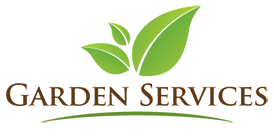July has arived showing us why it is the peak of our rainy season, so turn off your automatic sprinklers this month and let Mother Nature do the watering for you. You should be monitoring your annuals & plants for root rot problems caused by the excessive standing water which suffocates the root systems. This is also one of the strongest growing months for plants, so a supplemental fertilization for your plants, grass & trees should be planned. Using weed-n-feed fertilizer on your lawn during hot weather can damage your turf.
There are six common practices to managing weeds in plant beds: hand pulling, shallow cultivation, mulching, herbicides, exclusion and soil solarization.
- 1) If only a limited amount of weeds are present in your bed, hand pulling is probably the most effective way to eliminate them. Hand pulling is also one of the most environmentally friendly and cost effective weed control methods. Make sure to remove the weed’s entire root system when pulling them out of the ground.
- 2) Shallow cultivation with a scuffle hoe will “decapitate” and control some weeds only if they don’t have root systems that regenerate.
- 3) Mulching your landscape beds can be an effective weed preventative. Mulch obstructs sunlight making it difficult for weeds to germinate. Common mulch materials include cypress mulch, pine-bark, melaleuca mulch, recycled hardwood, and various types of stone materials. For maximum effectiveness, mulching material should be applied at least two inches thick. Mulch should be kept several inches away from the bases of plants to keep them healthy.
- 4) Herbicides are chemicals that can be applied to weeds to prevent or kill them. They can be effective if instructions are properly followed and the correct herbicide is used. Timing of herbicide applications is the key to successful herbicide use. There are many different types; do your research and choose the proper herbicide for your specific weeds.
- 5) There’s also a preventative method: exclusion. Excluding weeds means not introducing a weedy new plant to the plant bed in the first place, or if they’re already present, never allowing them to go to seed or they will return the following year in your bed area.
- 6) Soil solarization is a technique that uses the sun’s energy to battle pests and diseases in your soil. It’s especially effective against nematodes, which are tiny worms that feed on the roots of plants.
In the summer after your last vegetable harvest, remove all the plants from there area. Break up the soil, add any needed amendments, and irrigate the area. Then cover it with sturdy, plastic film, securing the edges to hold in the heat. Leave the plastic on the ground for about six to eight weeks. The heat held in by the plastic can reach temperatures as high as 130 degrees, baking the nematodes and vastly reducing their population. Your vegetable garden will be awaiting you in the fall to start your next crop of veggies.
Diseases can be difficult to identify because they often look like other turfgrass problems such as drought, cold damage, insects, or even dog urine damage.
Turfgrass diseases sometimes occur in poorly maintained lawns. Lawns that are properly watered, mowed, and fertilized are less likely to become infected. You should first rule out other factors before concluding your lawn has a disease.
If you are still unable to identify your turf problem, disease may be the case. Common Florida turfgrass diseases include large patch, take-all root rot, dollar spot, pythium blight, and others.
Disease symptoms can vary, so it is important to keep a record of past disease occurrences since outbreaks often re-occur in the same location. Common symptoms include an irregularly-colored, circular patch of turfgrass or leafspots.
Pathogens are microorganisms that cause turfgrass diseases. For pathogens to establish, the right environmental conditions must be present. Often, easy changes such as reducing water, providing more sunlight and avoiding excessive fertilizer feedings can discourage the disease.
Fungicides are often used to treat turfgrass diseases. It is important to know what type of disease is infecting your lawn to determine what type of fungicide to use. Complete recovery can be a slow process; after the disease has been controlled, you can wait for the healthy grass to grow back in, or speed the process by filling in with fresh plugs or sod.
July’s check list:
Bedding Plants: Summer annuals to plant now include celosia, coleus, torenia,
and ornamental pepper.
Bulbs: Butterfly lily and gladiolus are bulbs that can be planted during the middle of
summer.
Vegetables: Start seeds now to transplant later into the fall vegetable garden.
Herbs: While summer is too hot to start herbs from seeds, many will do well if
started from small plants.
Palms: Continue planting palms while the rainy season is in full swing. Support
large palms with braces for 6-8 months after planting. Nails should not be driven
directly into a palm trunk.
Trees: Prepare for hurricane season by checking trees for damaged or weak
branches and prune if needed. Hire an ISA arborist if you are not sure what you are doing.
Lawn insects: Lawn pests can be a problem this time of year. Before treating,
make sure an insect is the culprit and treat only the affected area.
Irrigation: An inexpensive rain shut off device can save money by overriding an
irrigation system when its raining. If one is already installed, check that it is operating
properly.
I hope the list we have prepared for you helps you with tips to improve your gardens. If you need help regarding your landscape, we at Garden Services are fully licensed & insured to handle all of your irrigation, landscaping, maintenance and tree service needs whether it’s a residential, commercial or homeowner association property.
